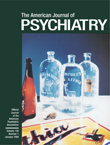Past-Year Use of Outpatient Services for Psychiatric Problems in the National Comorbidity Survey
Abstract
OBJECTIVE: The authors present nationally representative descriptive data on 12-month use of outpatient services for psychiatric problems. They focused on the relationship between DSM-III-R disorders and service use in four broadly defined service sectors as well as the distribution of service use in multiple service sectors. METHOD: Data from the National Comorbidity Survey were examined. RESULTS: Summary measures of the seriousness and complexity of illness were significantly related to probability of use, number of sectors used, mean number of visits, and specialty treatment. One-fourth of the people in outpatient treatment were seen in multiple service sectors, but no evidence was found of multisector offset in number of visits. CONCLUSIONS: Use of outpatient services for psychiatric problems appears to have increased over the decade between the early 1980s and early 1990s, especially in the self-help sector. Aggregate allocation of treatment resources was related to need, highlighting the importance of making provisions for specialty care in the triage systems currently evolving as part of managed care.



